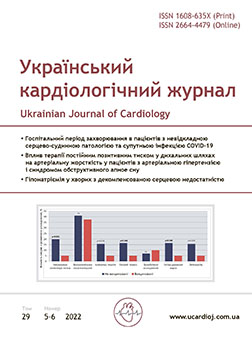Clinical case: treatment of acute pericarditis in patient with a mine-explosive injury
Main Article Content
Abstract
Acute pericarditis is the most common manifestation of pericardial disease affecting both sexes and is an important cause of morbidity. Post-traumatic pericarditis is particularly rare, several cases have been described in the literature, and the pattern of occurrence and pathophysiology have not been sufficiently studied.
Pericarditis with or without pericardial effusion, which occurs as a result of pericardial damage, is a postcardiac trauma syndrome. Most reported cases of post-traumatic pericarditis document a history of direct trauma to the chest, such as chest trauma from a steering wheel, which was observed during car accidents or caused by mechanical damage to the chest of various genesis. Many methods of treatment of inflammatory diseases of the pericardium have been proposed – from palliative to radical. The most common among them are percutaneous pericardial puncture, extrapleural pericardiotomy, or fenestration, partial or subtotal resection of the pericardium. The choice of surgical tactics largely depends on the specialist who performs it and the clinic where this treatment takes place, and not on the specific situation. Inflammatory pericardial syndrome can be established in the presence of at least 2 of the following 4 criteria: pericardial chest pain; pericardial murmur; the appearance of a new widespread convex elevation of the ST segment or depression of the PR segment (in several leads excluding aVR and sometimes V1) on the electrocardiogram; pericardial effusion (new, or an increase in the severity of the existing one according to echocardiography and radiography of the chest cavity). Additional signs include: an increase in the concentration of inflammatory markers (C-reactive protein, erythrocyte sedimentation rate, leukocytosis) and markers of myocardial damage (CFC, troponin I); signs of the inflammatory process in the pericardium during imaging methods (computed tomography, magnetic resonance imaging).
Article Details
Keywords:
References
ESC/EAS Guidelines for the management of dyslipidaemias: lipid modification to reduce cardiovascular risk. Mach F, Baigent C, Catapano AL, Koskinas KC, Casula M, Badimon L, Chapman MJ, De Backer GG, Delgado V, Ference BA, Graham IM, Halliday A, Landmesser U, Mihaylova B, Pedersen TR, Riccardi G, Richter DJ, Sabatine MS, Taskinen MR, Tokgozoglu L, Wiklund O; ESC Scientific Document Group. Eur Heart J. 2020;41(1):111-88. https://doi.org/10.1093/eurheartj/ehz455.
Visseren F, Mach F, Smulders Y. 2021 ESC Guidelines on cardiovascular disease prevention in clinical practice. Eur Heart J. 2021;42(34):3227-37. https://doi.org/10.1093/eurheartj/ehab484.
Sharifi M, Futema M, Nair D, et al. Polygenic Hypercholesterolemia and Cardiovascular Disease Risk. Current Cardiology Reports. 2019;21(6):43. https://doi.org/10.1007/s11886-019-1130-z.
Medeiros A, Bourbon M. Polygenic contribution for familial hypercholesterolemia (FH). Current Opinion in Lipidology. 2021;32(6):392-5. https://doi.org/10.1097/MOL.0000000000000787.
Мітченко О.І., Романов В.Ю., Чулаєвська Н.М., Тімохова К.О. Сімейна гіперхолестеринемія: етіопатогенез, діагностика, лікування та стан проблеми в Україні // Український кардіологічний журнал. – 2019. – № 4. – С. 23-31. https://doi.org/10.31928/1608-635X-2019.4.2331
Trinder M, Francis G, Brunham L. Association of Monogenic vs Polygenic Hypercholesterolemia With Risk of Atherosclerotic Cardiovascular Disease. JAMA Cardiol. 2020;5(4):390-9. https://doi.org/10.1001/jamacardio.2019.5954.
Cosentino F, Grant PJ, Aboyans V. et al. 2019 ESC Guidelines on diabetes, pre-diabetes, and cardiovascular diseases developed in collaboration with the EASD: The Task Force for diabetes, pre-diabetes, and cardiovascular diseases of the European Society of Cardiology (ESC) and the European Association for the Study of Diabetes (EASD). Eur Heart J. 2020;41(2);255-323. https://doi.org/10.1093/eurheartj/ehz486
Vekic J, Zeljkovic A, Stefanovic A. et al. Obesity and dyslipidemia. Metabolism. 2019;92:71-81. https://doi.org/10.1016/j.metabol.2018.11.005.
Mitchenko OI, Timokhova KO, Chulaievska NM. Diagnostic Features and Selection of Hypolipidemic Therapy in Patients with Coronary Artery Disease with “Possible” Familial Hypercholesterolemia. Ukrainskyi Zhurnal Sertsevo-sudynnoi Khirurhii. 2022;30(3):50-9. https://doi.org/10.30702/ujcvs/22.30(03)/MT041-5059

